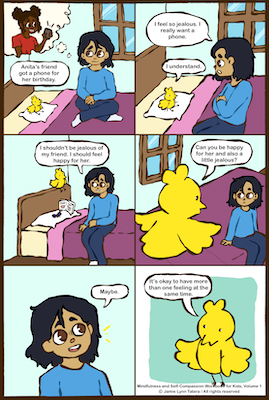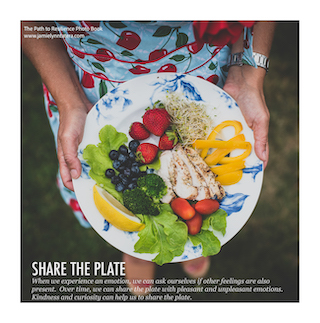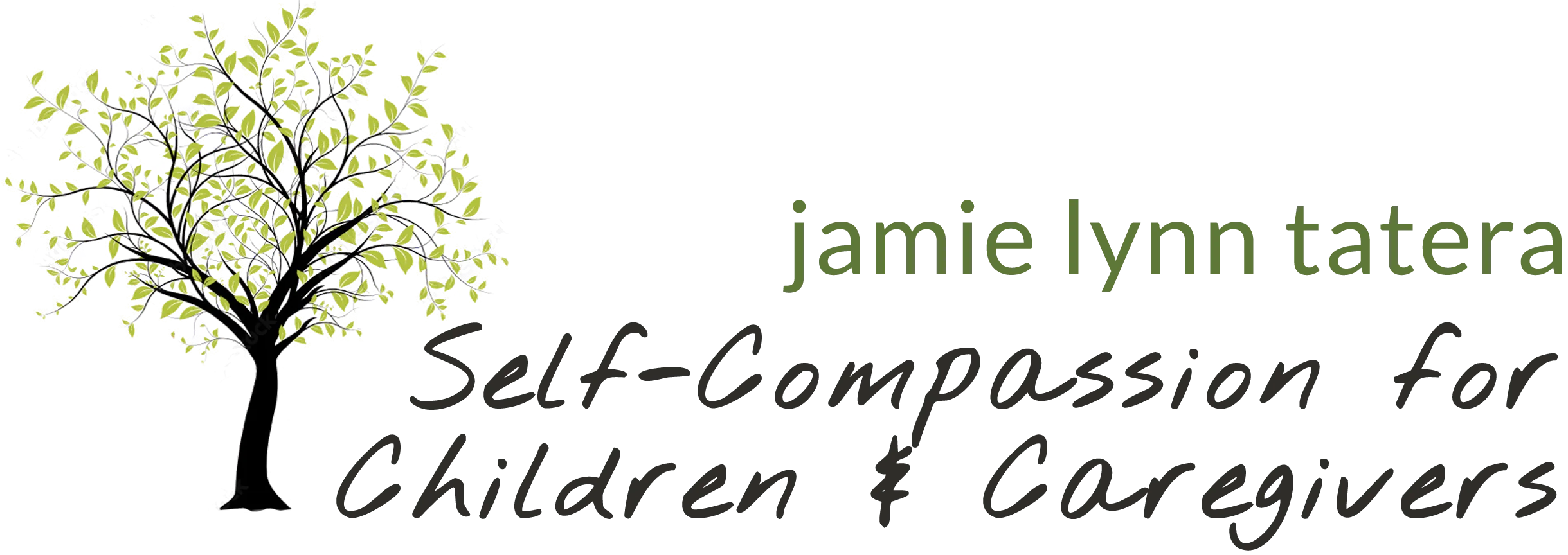An Emotional Intelligence Boosting Exercise for Kids and Grown-Ups
Have you ever told yourself that you shouldn’t feel jealous of someone? Me, too. Thinking that we shouldn’t feel jealous, or angry, or __(fill in the blank with the emotion)__ is common for kids and grown-ups who have the “deer” feelings habit. Those of us who have the deer habit are likely to suppress or feel ashamed when we feel jealousy. But it’s not just those of us with the deer habit who suffer. Those with the chameleon habit are likely to deny that jealousy is arising, and those who have other feelings habits may feel consumed with their jealousy. Note: You can read my Feelings Habit Animals article if you’re new to my blog and unfamiliar with the feelings habit animals.
In volume one of the Mindfulness and Self-Compassion Workbook for Kids, Anita is the comic character who struggles with shame-prone feelings. In the comic below, Curi (the helpful and curious chick) helps Anita when she struggles with the emotion of jealousy:

Curi helps Anita understand that it is okay to feel jealous, and that jealousy does not have to be the only emotion that she experiences. We can feel both jealous of someone, and also happy for them. Sometimes the jealousy is big and the happiness is little, and sometimes it’s vice versa. Either way, we are still a good person having a human emotion.
NOTE: Be sure to scroll down for upcoming opportunities to help youth (and you!) grow mindfulness and self-compassion.
The idea that we can feel more than one emotion can be liberating to adults and kids alike. Creating space for more than one feeling can lessen the urge to suppress or obsess about feelings, which can help us find more balance in the midst of challenging emotions.
In the video below, my daughter, Maya, and I do a wonderful activity for kids that demonstrates this concept. During the second half of the video we do an exercise from my Parent-Child Self-Compassion class known as “share the plate.”

Share the plate reminds us that we can allow multiple emotions to coexist side-by-side.
As you watch the video, you might consider a time when you felt jealous. Was there more than just jealousy? Can you wrap your difficult feelings in a metaphorical blanket of self-compassion as we do in the video? Can you remind yourself that everyone feels jealous sometimes, and give yourself kindness because jealousy can be a challenging emotion?
And can you be a little bit curious, when the time is right, about other positive emotions, too?
Ironically, when we allow ourselves to embrace multiple emotions with curiosity and compassion, the challenging emotions can become less sticky.
There are a wealth of upcoming opportunities to to grow your own self-compassion and learn to share self-compassion with youth including:
- Upcoming Self-Compassion for Children and Caregivers Intro Session
- An event to help kids “Be Smart with Smartphones and Social Media”
- Parenting with Self-Compassion Workshop through the Center for MSC
- Mindful Self-Compassion Course (for adults)
- Fierce Self-Compassion Course – this is like a “part 2” for Mindful Self-Compassion grads who would like to bolster their inner strength
So many great opportunities to grow the resilience boosting power of mindfulness and self-compassion!
With Love,
Jamie Lynn
